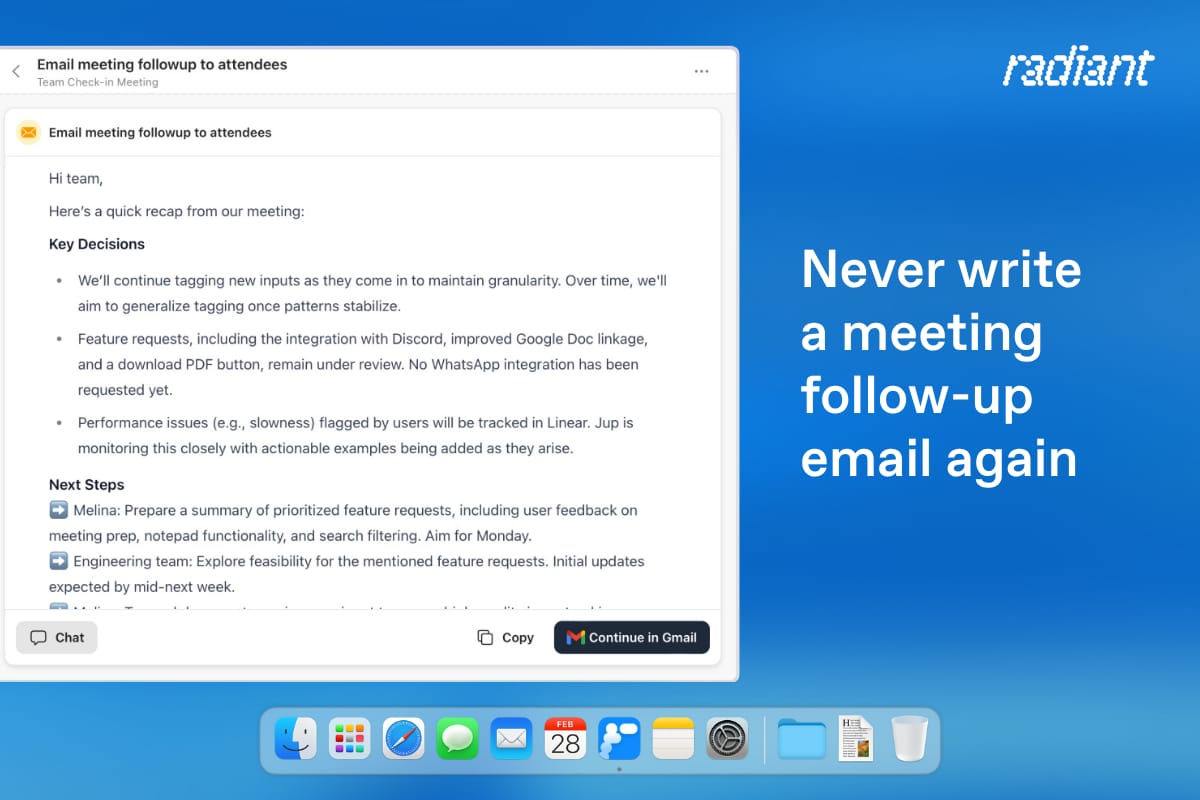- The Deep View
- Posts
- AI chatbots do your holiday shopping
AI chatbots do your holiday shopping

Welcome Back. Happy Black Friday. We hope you’re having a Happy Thanksgiving! AI firms and retailers are betting big that AI will change the way consumers shop, from shopping assistants within app interfaces to built-in chatbots on your favorite retail sites. But consumer adoption is still up in the air.
1. AI chatbots do your holiday shopping
2. E-commerce, retail brands lean on AI
3. For consumers, AI shopping is a mixed bag
PRODUCTS
AI chatbots do your holiday shopping

As AI firms scramble for consistent streams of revenue, some might be eyeing your Christmas list.
Model developers are targeting online shopping as a means of cozying up to the consumer, following in the footsteps of social media giants like Meta and TikTok that have raked in billions from ecommerce and digital advertising.
Both Perplexity and OpenAI have introduced shopping tools ahead of the holiday season:
Last week, OpenAI launched a tool called “shopping research,” which takes the work out of online shopping for the consumer. Available in ChatGPT, users can simply send queries in their hunt for certain products, like “find the best cordless vacuum” or “pick out a new toy for my four-year-old niece,” and the chatbot will pull up a list for you, asking follow-up questions and reviewing context from past conversations if need be.
Perplexity, meanwhile, announced a free agentic online shopping tool that allows users to purchase straight from the output and a virtual try-on feature using avatars. The tool, developed in partnership with PayPal to give users access to more than 5,000 of its merchants, is more personalized and better at detecting user intent than its previous paid shopping offering, called “Buy With Pro.”
And while not a shopping tool, Google introduced ads into AI Mode in recent weeks, integrating its primary revenue stream into the product that it’s spent billions developing.
The benefits of AI firms getting into ecommerce are threefold, Pat Copeland, GM of Commerce Media at Moloco, told The Deep View. On top of providing another means of monetization, shopping tools give these a ton of personalized data on users.
“What they're doing is they're capturing intent,” said Copeland. "You're telling it a bunch of things that you want to do or things that are interesting to you.” That valuable data can be handed over to advertisers or used to make their own models more personalized, he noted.
Plus, the more personalized these models become, the more useful and the easier they are to integrate into a user’s day-to-day life. Who needs Santa when you’ve got ChatGPT?
“Shopping is one of the most universal, high-frequency behaviors people do online, which makes it a powerful use case for AI,” Grant Deken, head of product at email marketing firm Klaviyo, told The Deep View.
TOGETHER WITH MIRO
The Secret Behind Sony And Red Hat’s Success
Three words: Smart engineering workflows.
Sony and Red Hat are two of the biggest names in the business – so when we found out they both use Miro to revamp their engineering workflows and automate backlogs, increase delivery speed, and synthesize feedback, we had to know more.
Lucky for us, their engineers sat down with Miro to do just that. Hear from guest speakers Jan Mark Holzer, Senior Distinguished Engineer at Red Hat, and Steph Russell, Associate Test Engineer at Sony Interactive Entertainment Europe in this on-demand webinar which you can access right here.
CONSUMER
E-commerce, retail brands lean on AI

AI firms aren’t the only ones getting in on the Black Friday frenzy.
E-commerce businesses and traditional retailers alike are increasingly integrating AI into their business models. In late November, Target became the latest major retailer to collaborate with ChatGPT, allowing users to query for Target products directly in the chatbot’s interface.
“We wanted to make it easier to shop by taking the pressure off needing to know exactly what you want or having to sift through an endless number of search results,” Purvi Shah, VP of UX design, research and accessibility at Target, said in the announcement.
Target joins the likes of Walmart, Etsy and Shopify in collaborating with OpenAI on AI-powered shopping. It signals a growing wave of e-commerce businesses, big and small, figuring out where AI fits in. And many have high hopes:
Data from Shopify finds that 88% of businesses expect AI to enhance users’ shopping experiences. 92% are investing in AI to help streamline product discovery and purchase.
Many are leaning on AI for operations, with 51% of brands using it for content generation and 38% for inventory forecasting.
There are two main ways that ecommerce brands are weaving AI into the shopping experience, said Copeland: Embedding it directly in the large language model itself, such as Target’s collaboration with OpenAI, or by integrating models natively into their own platforms, such as Amazon’s AI offering, Rufus.
Copeland expects on-site integrations to gain ground, he said, as it naturally brings the power of AI directly to where users shop. “When you need it, that shopping assistant will be present in terms of advice and expanding your ability to discover things,” he said.
Plus, allowing AI firms to surface a retailer’s offerings within the models’ interfaces surrenders their control, running the risk of a brand becoming “flattened out” in terms of the way their products are presented to users, Copeland said. “It’s like Louis Vuitton showing up on the shelf with a knockoff. That would not be an appropriate brand presentation.”
TOGETHER WITH RADIANT
Tired of writing meeting follow-ups? Us too.
You know the feeling — the meeting ends, and suddenly you’ve got homework. Notes to tidy, action items to assign, emails to draft. Radiant handles all that for you.
This free AI meeting assistant from Supernormal quietly captures your meetings (without a bot in sight) and drafts your follow-up emails for you. Summaries, next steps, and action items land in one neat draft you can open in Gmail, review, and send in seconds.
Meetings in, momentum out. We like that equation.
CONSUMER
For consumers, AI shopping is a mixed bag

While brands and AI firms are all-in on using the tech to take over your holiday shopping, the jury is still out on whether consumers actually want that.
Shopify’s Holiday Retail Insights report found that 29% of shoppers intended to use AI to help them find deals, while 17% would use it for inspiration and product discovery. Around 65% said they’d likely use AI for at least one holiday shopping task.
A survey of 3,000 consumers across the U.S., U.K., and Australia from Klaviyo tells a similar story: 56% of shoppers surveyed intended to use AI shopping assistants during Black Friday and Cyber Monday.
“AI is turning shopping from a manual task into a guided, conversational experience,” said Deken.” Instead of searching, scrolling, and comparing on their own, people can now ask an AI assistant for exactly what they need and get an instant, personalized answer.”
But AI shopping tools aren’t a “magic bullet,” for sellers or shoppers, said Copeland. As it stands, they’re just another tool in the arsenal of the consumer. Whether or not adoption ramps up depends entirely on the whims of the individual shopper.
“People will shop how they like to shop,” he said. “Some people like going to a store where they wander around, and it's like a treasure hunt. Some people like to spear fish and go directly to buy the thing that they want and get the heck out of there.”
But AI and machine learning are poised to solve the “matching problem,” Copeland said, surfacing products that better match the consumers’ needs. So far, that personalization is paying off, with Shopify’s data finding that 38% of shoppers bought more from brands offering tailored recommendations.
And like retailers and model developers, consumers expect AI to play some role in the future of shopping. Klaviyo’s data finds that 65% expect AI shopping assistants to be a regular part of online shopping by 2026. Shopify’s report finds that 54% believe AI will make shopping better, and 51% say it will help them save money. “Success for brands in the future of agentic commerce will come from using AI to personalize the whole shopping experience,” said Deken.
Still, Copeland said, we’re not there yet. “I don't think that you're going to see massive erosion of retailer focus going to ChatGPT this holiday season.”
LINKS

Jeff Bezos’ startup Prometheus acquires General Agents, an agentic AI firm
US AI, robotics VC deals increase fourfold since 2023
OpenAI needs to make more than $200 billion by 2030 to continue bleeding cash
Italian antitrust regulators broaden probe into Meta’s Whatsapp
MIT study finds AI can replace almost 12% of US workforce
Uber rolls out robotaxis in Abu Dhabi
OpenAI reveals security breach from to data analytics provider Mixpanel

Perplexity Virtual Try-on: Try on garments virtually using an AI avatar, available to Perplexity Pro and Max subscribers.
Eva: A voice assistant for turning your stream of consciousness into posts, visuals or videos.
Typeless: Natural voice dictation for polished messages, emails and documents.
Jitter AI Brainstorm: Drop your design into this video model for motion ideas, available in beta.

As of Sept 21, 2025, each U.S. H-1B visa costs $100,000.
Sponsorships are slowing, enterprises are struggling, and hiring just went global.
The winners? Those who hire remote-first.
Latin America offers world-class tech and AI talent in your time zone—for 60% less.
Smart hiring managers aren’t waiting. They’re hiring globally.
No visas. No delays. Just brilliant teams on demand.
(sponsored)
A QUICK POLL BEFORE YOU GO
How do you plan to use AI for holiday shopping this year? |
The Deep View is written by Nat Rubio-Licht, Faris Kojok and The Deep View crew. Please reply with any feedback.
Thanks for reading today’s edition of The Deep View! We’ll see you in the next one.

“The steel construction for the subway make a strange jump for one side of the pillar to the other. ” “The blue in the steam around the train was the giveaway for me. Ai still loves to splash color around that shouldn't be there to make a more cohesive image.” “Every time. Look for the text on everything.” |
“Why does the traffic line on the road bend suddenly? Should've looked more closely at the number plates and the sign on the taxi.” “The cloud condensation from the car.” “Didn't think the stoplights on the sidewalks made sense.” |

Take The Deep View with you on the go! We’ve got exclusive, in-depth interviews for you on The Deep View: Conversations podcast every Tuesday morning.

If you want to get in front of an audience of 450,000+ developers, business leaders and tech enthusiasts, get in touch with us here.






